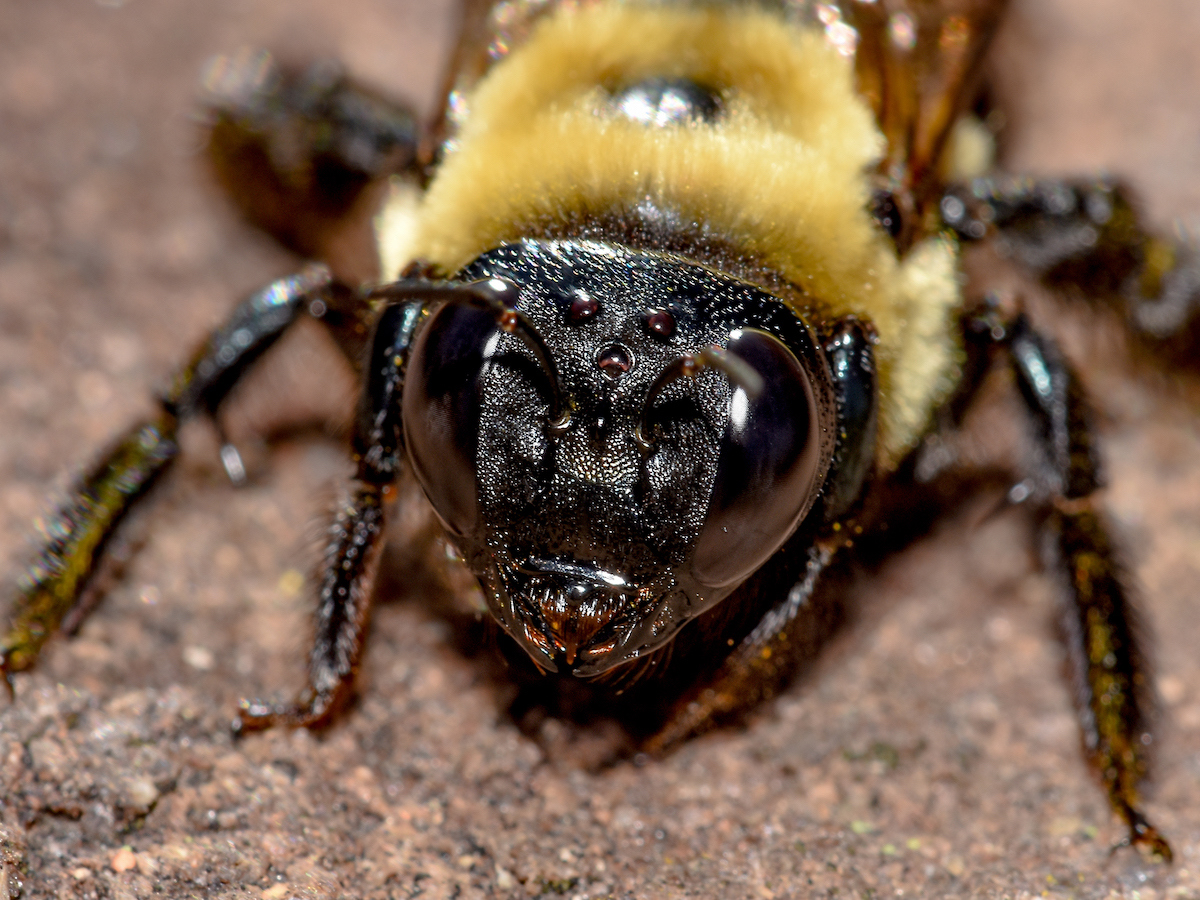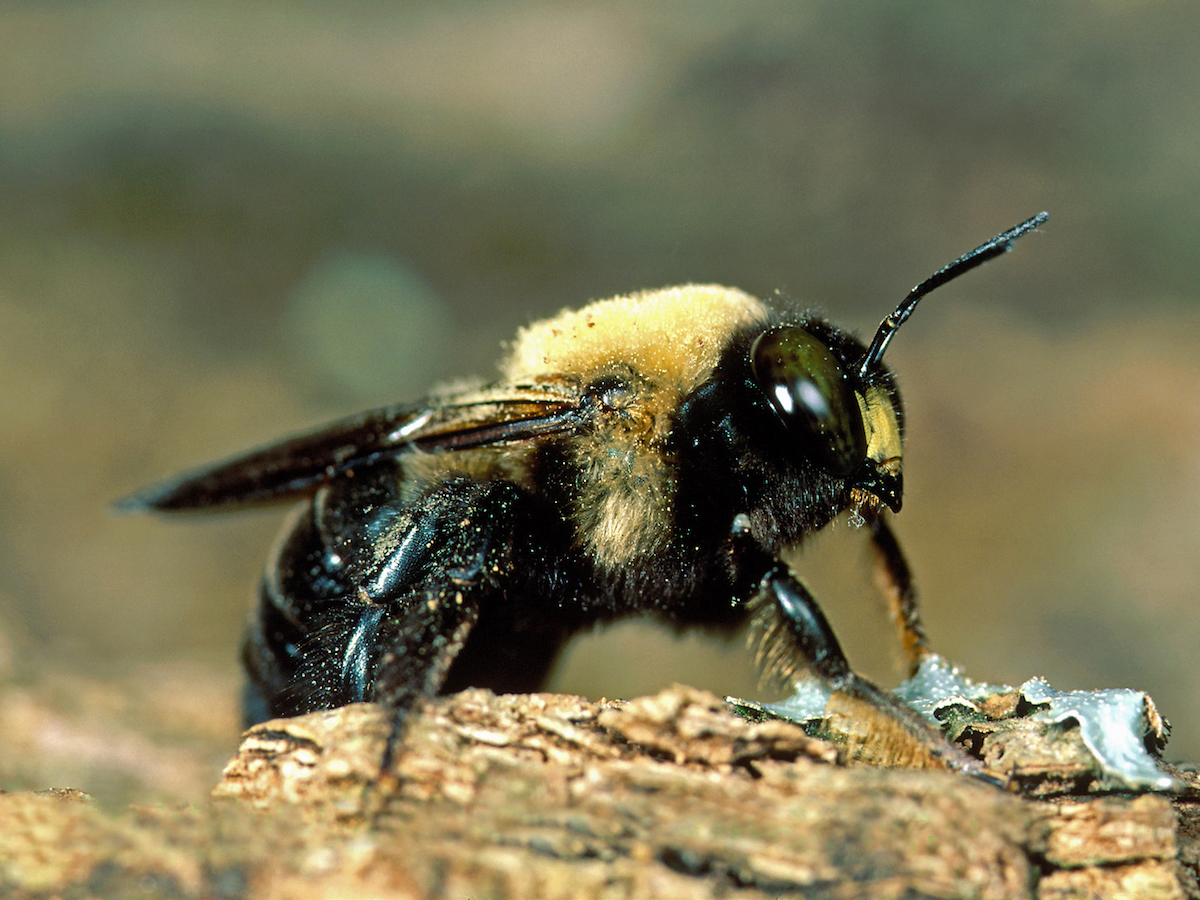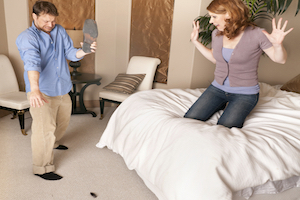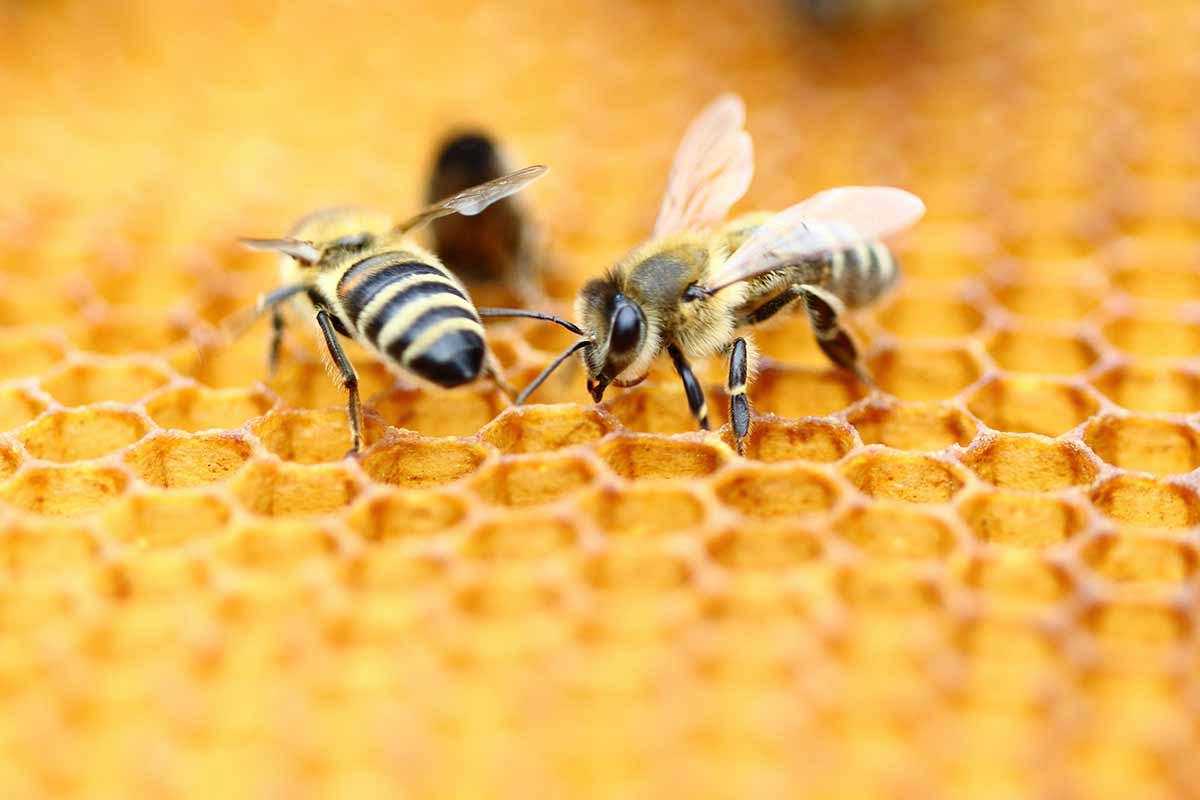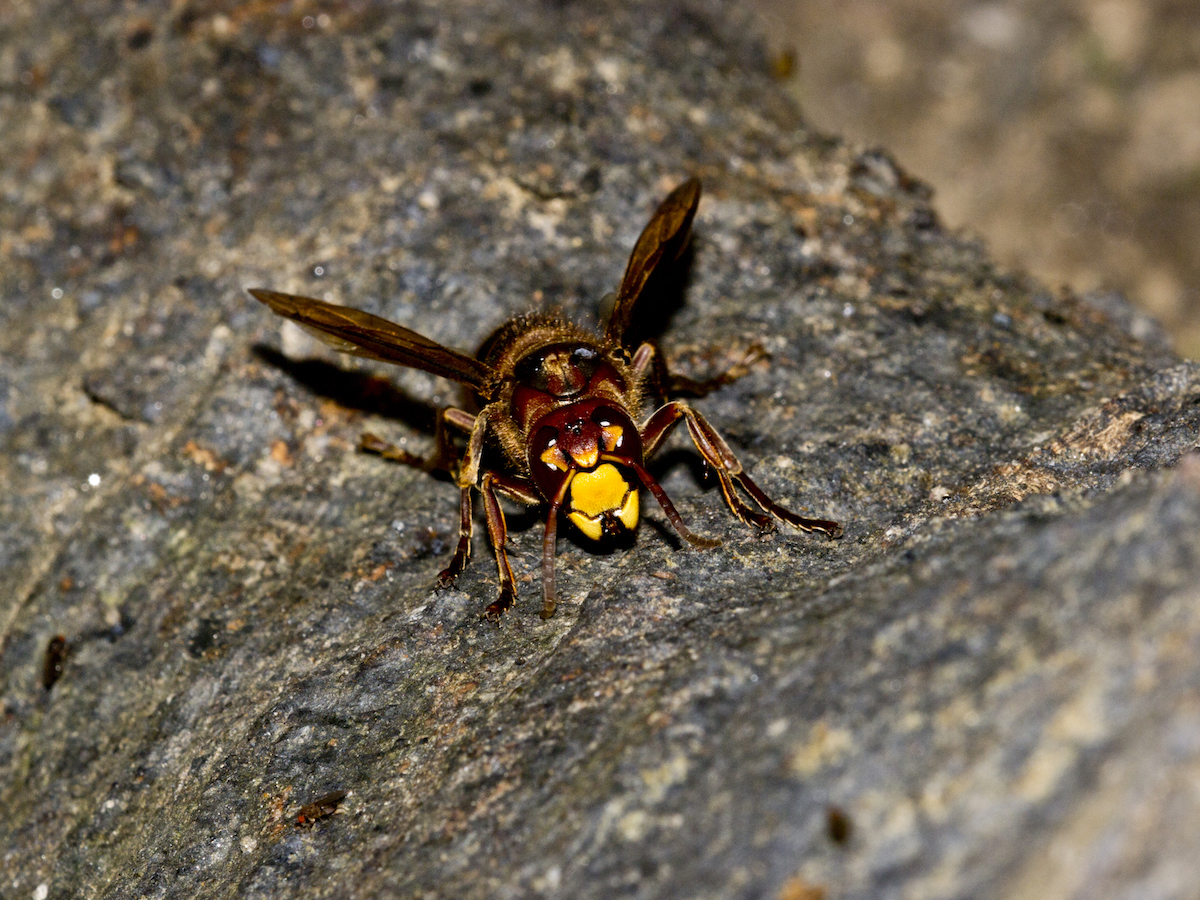Carpenter Bees Xylocopa species
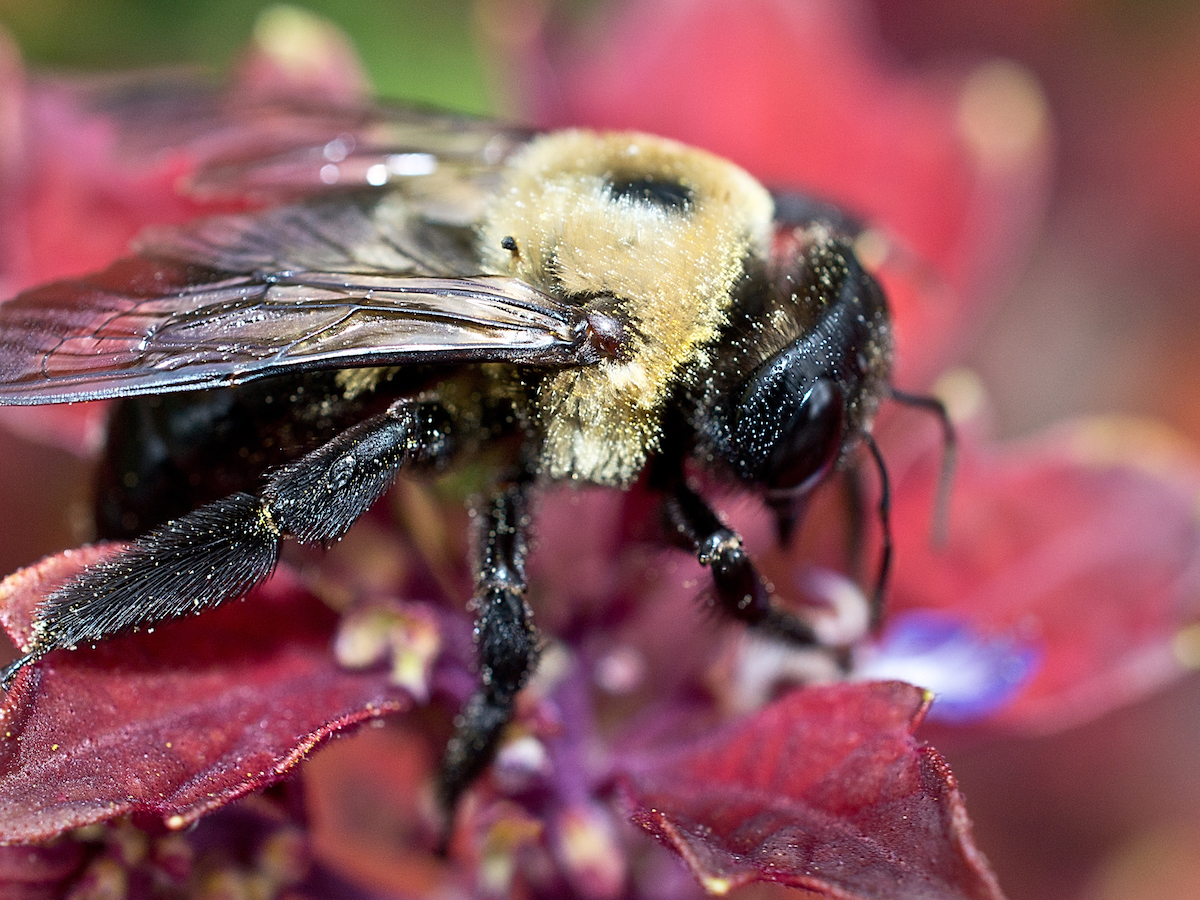
Carpenter Bees Identification
Color: Yellow or black
Size: 1/4 - 1 inch long
Legs: 6
Antennae: Yes
Shape: Oval and robust
Region: Found throughout the U.S.
What are Carpenter Bees?
Carpenter bees get their common name from their habit of boring into wood. Sometimes referred to as “wood bees,” carpenter bees do not actually eat wood, but cause damage to structures by drilling circular holes to create tunnels inside wood. Unlike other common bees, such as honeybees and bumble bees that live in colonies, carpenter bees are not social insects and build individual nests into trees outdoors or into the frames, eaves or sides of buildings.
Male carpenter bees do not sting, though females may in rare situations if provoked.
What Do Carpenter Bees Look Like?
Carpenter bees look similar to bumble bees in appearance, but they lack yellow markings on their abdomens. Instead, carpenter bee abdomens are smooth and shiny, whereas bumble bees have hairy, yellow abdomens.
Physical features of carpenter bees may vary slightly, as there are seven different species of carpenter bees across the U.S. and hundreds worldwide. Eastern carpenter bees, for example, are the kind that strongly emulate the appearance of bumble bees, with sleek, black bodies and a patch of yellow hair on their thorax. Other species like the California and female valley carpenter bees have more metallic, colorful bodies.
Male carpenter bees do not sting, but they are territorial and oftentimes the gender that most people come into contact. The males will hover closely to people, especially attracted to sudden movements, but do no more than create unnecessary fear. Female carpenter bees sting; however, it is on very rare occasions and requires provocation.
Carpenter bees are a serious property threat and cause structural damage over time if left untreated, especially if they repeatedly bore holes for nesting throughout the property. Furthermore, the large larvae developing into tunnels in homes are oftentimes attractive to woodpeckers that will seek out developing carpenter bees and create more extensive damage to the existing holes.
Carpenter bees do not live in nests or colonies. Instead, female carpenter bees bore circular holes through soft wood to lay eggs and protect their larvae as they develop. This can occur in your house and you may even find carpenter ants boring holes through fences.
Unlike bumble bees, carpenter bees are solitary insects. The adult carpenter bees hibernate over winter, typically in abandoned nest tunnels and emerge in the spring to feed on nectar.
Unlike bumble bees, carpenter bees are solitary and do not live in nests or colonies. Adult carpenter bees overwinter in abandoned nest tunnels where they have stored limited pollen to survive the colder temperatures. The bees that survive the winter will emerge in the spring to feed on nectar, mate and build galleries. They may reuse an already existing gallery or they may excavate new galleries.
Female carpenter bees chew circular holes through wood to make individual galleries to lay eggs and protect their larvae as they develop. These wood bees are particularly inclined to build their galleries in soft, unpainted and worn wood, although some species may prefer hardwood. Wooden structures on the property, like decks and fences, are also prone to carpenter bee infestations. New galleries average 4-6” (10-15 cm), long but reused galleries may extend up to 10 feet. As a female creates tunnels, she will bore larger, open areas into the tunnel, called cells, where her young will develop. She will provision each gallery cell with a mass of pollen and regurgitated nectar upon which she will lay a single egg. The female then seals this portion of the gallery with chewed wooden pulp. The eggs the female lays take approximately 36 days to develop to an adult.
The most common signs of a carpenter bee infestation are the round, smooth holes that carpenter bees bore into wood, hence the nickname “wood bees.” To identify early damage to buildings, homeowners should regularly inspect the perimeter of the home and surrounding property for the presence of these holes and hovering bees.
Since carpenter bees prefer bare wood, painting and staining wood can sometimes help deter them. However, they will occasionally attack stained or painted wood. To avoid carpenter bees and prevent them from entering the home, seal cracks and crevices along the property’s foundation and walls with a silicone-based caulk, repair any tears in screens, and always keep doors closed.
Looking to get rid of carpenter bees? An appropriately labeled insecticide specifically applied to each gallery can help control developing bees in the wood. Following insecticidal application, the holes should be left for the females to enter and come into contact with the product. After time, the holes can be sealed to prevent any overwintering bees from reusing galleries the next year. Proper bee control can be difficult, so it is advised to contact a licensed pest control professional for proper carpenter bee control. A professional has the knowledge to inspect the property for galleries and choose the appropriate treatment method.
You can find one near you with the helpful zip code search below.

